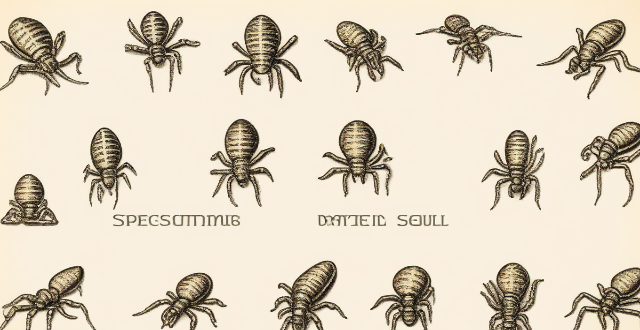Invasive species and climate change pose significant threats to native biodiversity by exacerbating range expansion, altering competition, increasing predation pressure, degrading habitats, facilitating disease transmission, disrupting mutualisms, having synergistic effects, depleting resources, displacing keystone species, and reducing ecosystem resilience. Integrated management strategies are crucial for mitigating these threats and include habitat restoration, invasive species control, protection of keystone species, and conservation of diverse genetic pools within native species to enhance their adaptability.

Invasive species and climate change are two major threats to native biodiversity. Invasive species are organisms that are not native to a particular ecosystem and have been introduced, either intentionally or accidentally, by human activities. Climate change refers to the long-term alteration of global climate patterns caused by human activities such as burning fossil fuels and deforestation.
The interaction between invasive species and climate change can exacerbate the threat to native biodiversity in several ways:
1. Increased Range Expansion: As temperatures rise due to climate change, some invasive species may find new habitats more suitable for their survival and reproduction. This can lead to an increase in their range and population size, putting additional pressure on native species.
2. Altered Competition: Changes in temperature and precipitation patterns can affect the competitive balance between native and invasive species. For example, if an invasive plant is more tolerant of drought than a native plant, it may outcompete the native plant under drier conditions brought on by climate change.
3. Changes in Predation Pressure: Invasive predators or herbivores may take advantage of climate change by expanding their range or increasing their reproductive output, which can lead to increased predation pressure on native species.
4. Habitat Degradation: Invasive species often alter the structure and function of ecosystems, making them less suitable for native species. Climate change can compound this effect by further altering the environment in ways that favor the invader over the native species.
5. Disease Transmission: Warmer temperatures associated with climate change can facilitate the spread of diseases carried by invasive species, posing a greater risk to naive native populations.
6. Disruption of Mutualisms: Many native species rely on mutualistic relationships with other organisms for pollination, seed dispersal, or nutrient uptake. Invasive species can disrupt these relationships, and climate change can further complicate matters by affecting the timing of seasonal events like flowering and migration.
7. Synergistic Effects: The combination of invasive species and climate change can have synergistic effects, where the impact on native biodiversity is greater than would be expected from each factor alone. For instance, an invasive plant might thrive in warmer conditions while simultaneously suppressing the growth of native plants through competition or allelopathy (the release of chemicals that inhibit the growth of other plants).
8. Resource Depletion: Invasive species often have high resource demands, such as water or nutrients. As climate change progresses, resources may become scarcer, leading to increased competition between native and invasive species.
9. Loss of Keystone Species: If an invasive species displaces a keystone native species—one that plays a crucial role in maintaining ecosystem structure—the entire community can be negatively affected, with cascading consequences for biodiversity.
10. Reduced Resilience: Ecosystems stressed by both invasive species and climate change may have reduced resilience, making them less able to recover from disturbances like wildfires or floods.
To mitigate these threats, it is essential to implement integrated management strategies that address both invasion pathways and climate adaptation measures. This includes restoring habitats, managing invasive species populations, protecting keystone species, and conserving diverse genetic pools within native species to enhance their adaptability to changing environmental conditions.